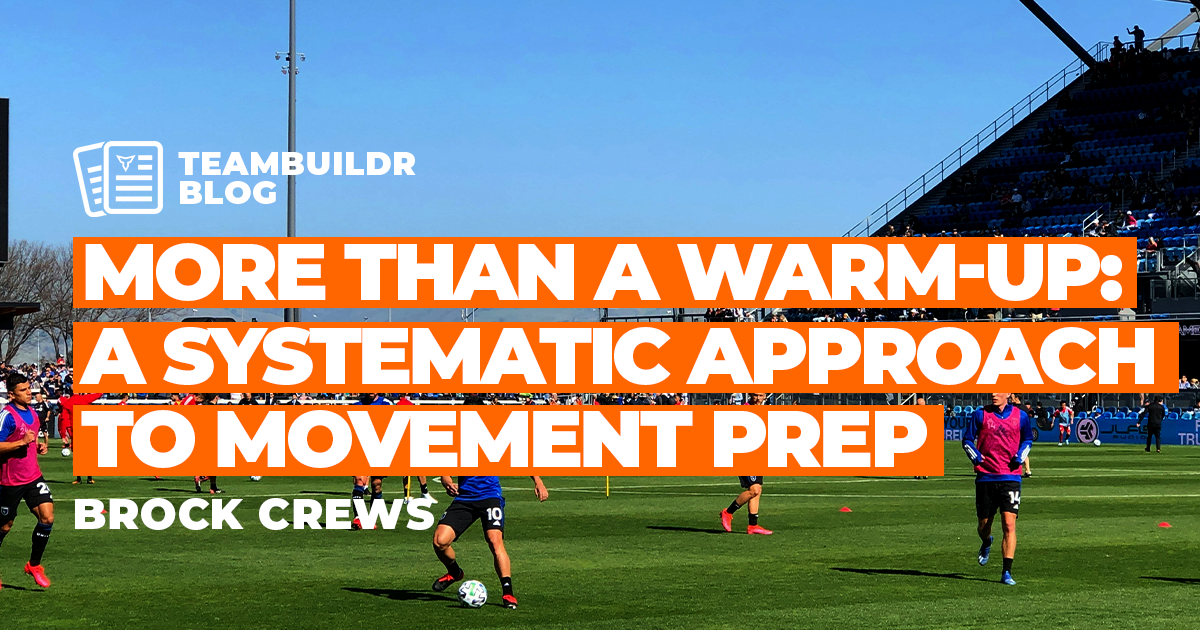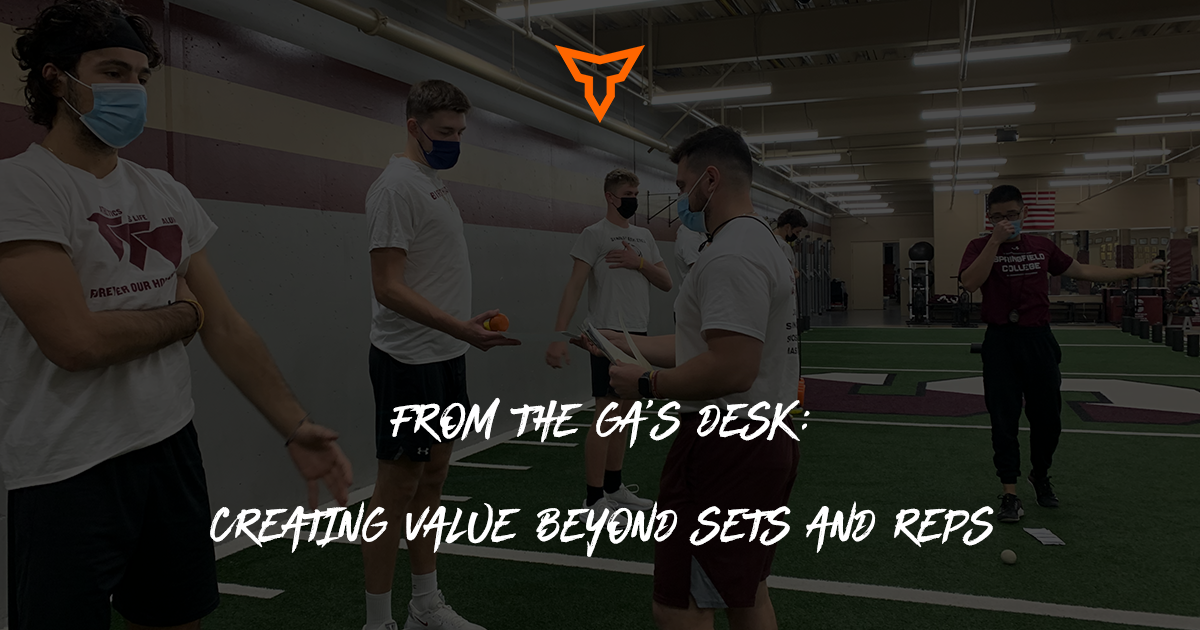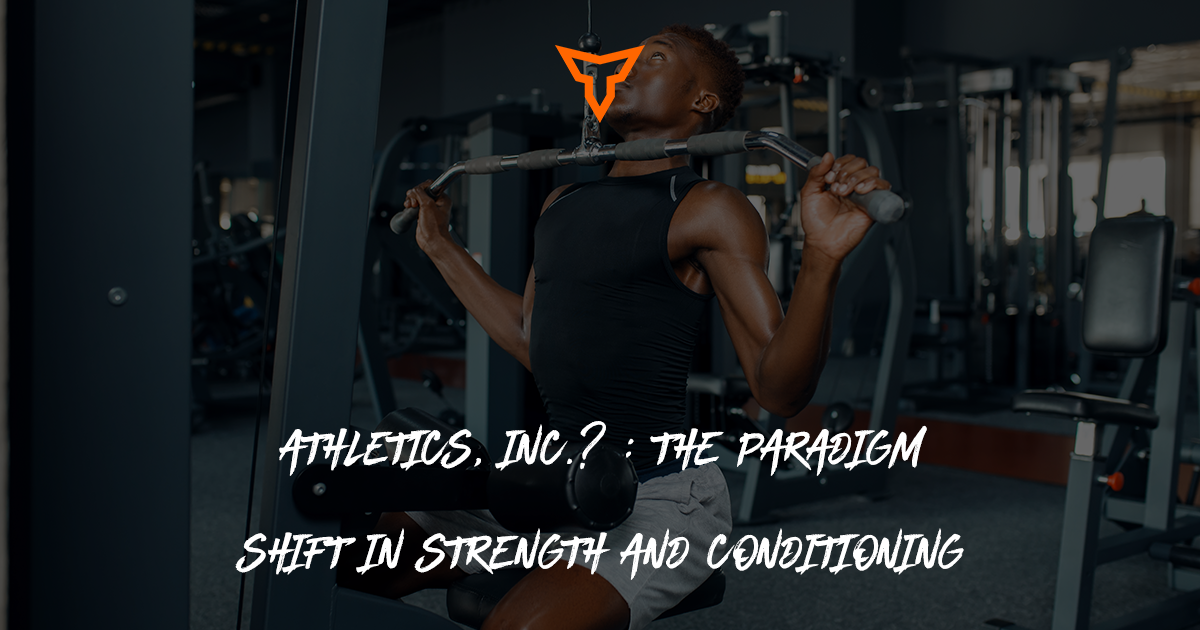5 Step Framework for Training Youth Athletes
When you work with high-level athletes, like D1 college athletes, or pros, there are a lot of things you can play with, there are a lot of things you can do and experiment with, and there’s a lot of variety you can have in training because chances are, these higher level athletes (depending on the sport) may have a high training age, meaning they have been training in their sport and in the weight room for a long time.
This is not the case for youth athletes. For the purposes of this article, I’m going to consider youth athletes as kids ages 10-17. I pick this range because I won’t train any athlete under 10 years old and typically by age 17 athletes may be in college. In my experience, anybody under 10 is typically not physically or emotionally mature enough to be in the weight room. They still need to be outside, playing with friends on the playground or in the grass barefoot developing strength and locomotion with their own body weight. I’ve simply found that kids under 10 lack the attention span and the maturity to be safe in the weight room. So what considerations do I make when training/programming the youth athlete?
First off, I have a framework and a set of principles that I work within. Within my framework I can manipulate exercises and training methods, but only if it fits within the framework. With elite-level athletes you can get away with being less strict with a framework, however, with youth athletes, a set framework is non-negotiable. I’m going to share my framework for my training sessions below, and why I think it is the most effective method for training youth athletes.
First, I want to dive into my speed and agility training. This portion of the training session always comes directly after the warmup. In this section, we are either sprinting or doing some sort of change of direction/agility drill. We can call this fieldwork. All fieldwork has a set progression. We go from planned drills, to reactive drills, to competitive drills.
Planned —> Reactive—> Competitive
1. Sprinting
An example of a planned drill may be a 10-yard sprint where the athlete starts on their own go. Here we are drilling the starting position and basic sprinting mechanics. The next progression would be a reactive sprint drill. A tennis ball drop is a good drill here, I’ll drop a tennis ball on the ground and the athlete has to sprint out and catch the ball before it hits the ground a second time. The last progression then needs to be competitive. The simplest drill here is a race between two athletes. See who can win a 10-yard sprint.
2. Change of Direction
For this example, we will discuss the 5-10-5 or pro agility drill. For a planned drill, simply run the 5-10-5 on your own go. For reactive, I will call out which cone to run to. For the competition, mirror drills work well here. Stick with each progression for 2-3 weeks.
What is the point of this progression? The point is that with each progression, you are adding a layer of cognitive thought to the drill, or the need to think more. With planned drills, the athlete knows exactly what the pattern is, nothing changes on the fly and they can simply focus on technique and mechanics. When you make things reactive suddenly the athlete has to start paying attention to an outside stimulus. Finally, with competitive drills, athletes are no longer thinking of technique and mechanics, they are only thinking about beating the person next to them, This is why it is so important to drill technique before doing anything competitive.
3. Jump Training/Plyometrics
This is always the second section of my training sessions. With jump training, there are only two progressions I go through. We start with jumping basics and landing mechanics. This means simply learning how to leave the ground and learning how to land on the ground in an athletic posture. We then move into training the Stretch Shortening Cycle (SSC) where the goal is to complete multiple jumps in a row with as little ground contact time as possible.
Basics/Landing Mechanics —> Stretch Shortening Cycle
Hurdle Jumps are a great drill to illustrate this progression. We start with a 2 legged hurdle jump where we emphasize triple extension (extending the hips, knees, and ankles), and swinging the arms up for momentum. When landing we stick the landing with arms back, feet flat, but back, knees over toes, and chest up. This landing position puts us in a position to go right into another movement in any direction. If we have 5 hurdles set up, the athletes jump over all 5 hurdles sticking the landing in between each hurdle for at least 2 seconds. Once an athlete has mastered the landing, we start to train faster. After 2-3 weeks of sticking the landing, we now tell the athletes to jump over all 5 hurdles with spending as little time on the ground as possible between hurdles. If you were to skip teaching landing mechanics you’re going to see all sorts of poor mechanics, like feet hitting at different times, arms flailing, chest collapsing, etc.
4. Lifting
In the next section of the workout, we will do some version of one of the big three, either Squat, bench, or deadlift. No matter what variation we use, there are standards that must be hit before any athlete gets to touch a barbell. For the squat, all athletes must be able to do a goblet squat with a 45lb dumbbell for 5 good reps. The bar also weighs 45lb but the dumbbell is an easier implement to use so it's a good measuring stick.
Regarding the bench press, we don’t let anybody bench the barbell until they can bench 20lb dumbbells for 5 good reps. This shows me that they have enough strength, particularly in their shoulders to stabilize themselves under load. Finally, before anybody gets to deadlift with a bar (typically a trap bar) they have to do a 90lb Kettlebell deadlift for at least 5 good reps. The kettlebell may be heavier than what they lift with the trap bar, but the positioning of the Kettlebell vs the trap bar makes the kettlebell deadlift easier and allows us to more easily train posture.
Then on to accessory work, typically using, bodyweight exercises, dumbbells, kettlebells, or bands. Whether or not we are training, the core, upper, or lower body, the progression goes from stable to unstable, or static to dynamic.
Stable —> Unstable/Dynamic
Anytime you add a moving part to an exercise it automatically becomes less stable, so it is important to drill proper positions with stable or static exercises. A good example of a static core exercise is a simple plank for time. It allows athletes to hold the position and dial in technique. From there we may go to lifting one hand or leg off the ground at a time to add a layer un instability.
When it comes to lower body exercises a split squat is a good static position to start with. You are moving up and down, but your feet stay fixed in one position. The progression from here would be a forward or reverse lunge where you drop in and out of a split squat position. If you go right to lunging without training the split squat you may end up in all sorts of funky positions, heel off the ground, feet out lot line, chest collapsing, knee caved in, etc. The last thing you want is for each athlete to have their own version of an exercise. More often than not, there is a right and wrong way to do something in the weight room.
5. Conditioning
No matter what style of conditioning we do there is one simple rule when it comes to exercise selection. Pick exercises and movements that are too simple to screw up. Whenever you do anything for time, technique tends to go out the window. Bike sprints, sled pushes, med ball throws, jump rope, and any exercise that requires only 1-2 cues work well. I avoid any conditioning exercise that requires more than 2 cues such as larger compound lifts, Olympic lifts, and dynamic movements, and I also avoid jumps because the higher you jump, the fewer reps you have to do which makes it less of a conditioning drill. So when it comes to conditioning, simpler exercises allow us to focus on increasing reps, rounds, or time that we train for as opposed to having to focus on technique.
The whole point of the framework is to make sure that you have a reliable product. If you want athletes to progress efficiently and more importantly, safely, a framework with set principles is a requirement. No matter how novice an athlete is, they should be able to look and feel like a seasoned athlete if they move through each progression laid out here (they may have to go through progressions more than once). And even if an athlete is more advanced and athletic, nobody is above training and mastering the basics. In fact, anytime you see a pro athlete doing well in their sport, you are seeing the basics being demonstrated at a high level.
Subscribe to our blog
Subscribe to receive the latest blog posts to your inbox every week.
Related posts

Systematic Approach to Movement Preparation

From the GA's Desk: Creating Value Beyond Sets and Reps


